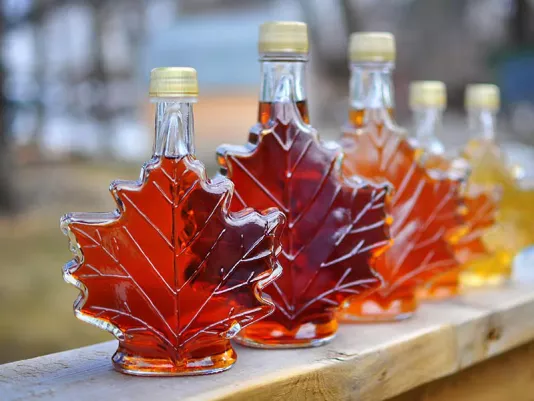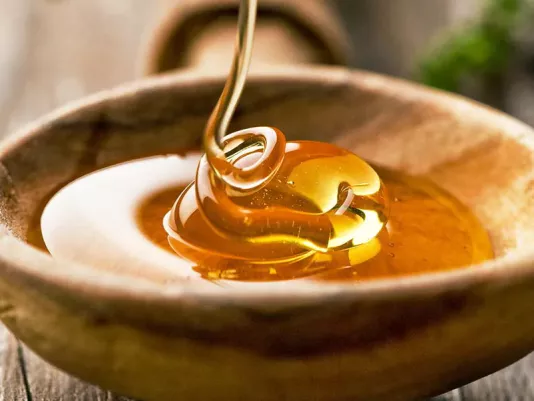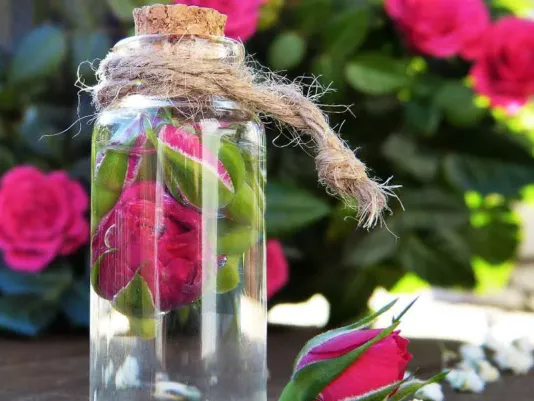Syrups and Other Liquids
Syrups and Other Liquids have always played the role of special ingredients in my kitchen, able to change the mood and taste of a dish with just a few drops. I use maple syrup as a natural sweetener that perfectly suits pancakes, waffles, or porridge, and also adds caramel notes to sauces. Fruit syrups for me are a way to add brightness and juiciness to desserts, drinks, or even salads. Rice syrup I discovered as a lighter alternative to sugar, and now I often add it to baked goods and homemade bars. Rose water has become a true culinary find for me: its aroma makes pastries, desserts, and even drinks special and unforgettable. I realized that syrups and aromatic liquids are not only decoration but also an important component that creates the unique character of each dish.
Different Types of Syrups and Aromatic Liquids
Maple Syrup in Cooking
Maple syrup has always been for me a symbol of coziness and sweetness that requires no extra embellishment. Its thick caramel-nutty taste I loved from the first spoonful, and now it is always present in my kitchen. I use maple syrup for pancakes and waffles, as it perfectly highlights their tenderness and makes breakfast special. It also works well in desserts, for example, drizzling over ice cream or fruit, where it creates the effect of elegant serving. I often add a few spoons of this syrup to baked goods to give the dough a light caramel aroma that is already pleasant during cooking. In addition, maple syrup works well in savory dishes: I like adding it to marinades for meat or roasted vegetables, as it creates a caramelized crust and balances the taste. I realized that maple syrup is a universal product that suits both everyday dishes and festive recipes. It adds warmth and a special character to each dish, and for me it has become one of the key ingredients that help diversify the menu and give it individuality.
Fruit Syrups and Their Variety
Fruit syrups have always been a source of inspiration for me in cooking, as they allow experimenting with flavors and making dishes more vivid. I love using them in desserts – from ice cream to baked goods, where they add fruity notes and create a pleasant balance between sweet and fresh. In drinks, fruit syrups opened a whole new world for me: cocktails, lemonades, or even tea with a few drops of syrup turn into new, more interesting variations. I often use strawberry or raspberry syrup for pancakes or fritters, as they add juiciness and create a festive mood even on weekdays. Citrus syrups I like to use in sauces and dressings, as they go perfectly with chicken or fish, making the dish fresher. I realized that fruit syrups are not just a sweet decoration but a real tool for culinary experiments. They always help make dishes more vivid, diversify the diet, and give the feeling that each dish is created with special attention.
Rice Syrup as a Sugar Alternative
Rice syrup became a true find for me when I started looking for healthier substitutes for regular sugar. Its mild taste with light caramel notes makes it a universal ingredient suitable for a wide variety of dishes. I love adding it to baked goods, as it makes the dough tender, and the finished products have a pleasant color and light sweetness without excessive cloying. In homemade bars or granola, rice syrup became indispensable for me – it not only adds sweetness but also binds all the ingredients, making them convenient to serve. In drinks it also works perfectly: tea or coffee with rice syrup I perceive as a lighter and more balanced option that does not overload the taste. In addition, I like using it in sauces for meat or vegetables, where it adds delicate sweetness and at the same time emphasizes the natural taste of the products. I realized that rice syrup is not just a sugar substitute but a full-fledged ingredient that opens new opportunities in cooking, helping to create healthier and at the same time tasty dishes.
Rose Water in Culinary Experiments
Rose water has become for me the ingredient that gives dishes special delicacy and refinement. I first tried its aroma in Eastern desserts, and since then it has firmly entered my culinary practice. I love adding a few drops of rose water to dough for cookies or sponge cakes, as it makes baked goods fragrant and creates a festive feeling. In drinks this ingredient shows itself no less interesting: lemonades, cocktails, or even tea with rose water gain a special character and remain memorable for a long time. I often use it combined with fruits or yogurt, as it perfectly highlights their freshness and makes the taste richer. For me, rose water became that culinary secret that always impresses guests and adds a note of exoticism to dishes. I realized that this ingredient, though requiring careful use, can turn an ordinary dish into something truly refined and unusual, memorable not only by taste but also by aroma.
The Role of Syrups and Aromatic Liquids in the Kitchen
For me, syrups and other aromatic liquids have always been a tool that helps create a new mood and make familiar dishes special. I realized that even a few drops of syrup or rose water can completely change the impression of a dessert, drink, or baked good. Maple syrup symbolizes coziness and warm breakfasts for me, fruit syrups bring brightness and juiciness, rice syrup adds lightness and benefits, while rose water makes dishes refined. I love experimenting with these ingredients, combining them with each other, discovering new variations in sweet and even savory dishes. They help diversify the menu and prove that cooking is the art of details. For me, these liquids have become an integral part of the kitchen, as they provide endless opportunities for creativity and allow making each dish unique, adding it a distinctive character and aroma.



